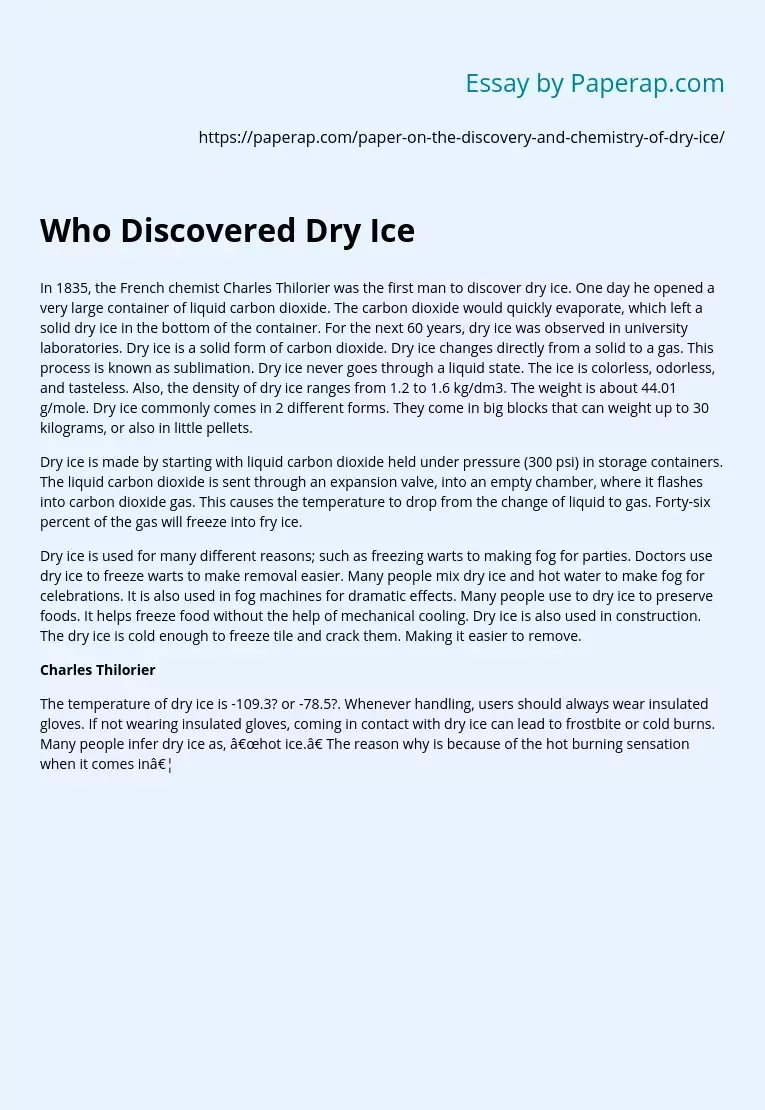Who Discovered Dry Ice
In 1835, the French chemist Charles Thilorier was the first man to discover dry ice. One day he opened a very large container of liquid carbon dioxide. The carbon dioxide would quickly evaporate, which left a solid dry ice in the bottom of the container. For the next 60 years, dry ice was observed in university laboratories. Dry ice is a solid form of carbon dioxide. Dry ice changes directly from a solid to a gas. This process is known as sublimation. Dry ice never goes through a liquid state.
The ice is colorless, odorless, and tasteless. Also, the density of dry ice ranges from 1.2 to 1.6 kg/dm3. The weight is about 44.01 g/mole. Dry ice commonly comes in 2 different forms. They come in big blocks that can weight up to 30 kilograms, or also in little pellets.
Dry ice is made by starting with liquid carbon dioxide held under pressure (300 psi) in storage containers. The liquid carbon dioxide is sent through an expansion valve, into an empty chamber, where it flashes into carbon dioxide gas.
This causes the temperature to drop from the change of liquid to gas. Forty-six percent of the gas will freeze into fry ice.
Who Discovered Dry Ice. (2019, Dec 05). Retrieved from https://paperap.com/paper-on-the-discovery-and-chemistry-of-dry-ice/
